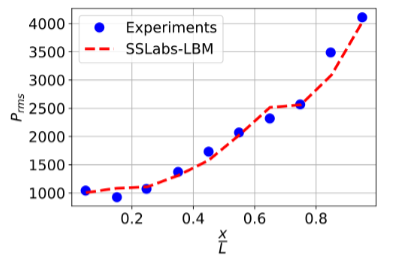Entropic Lattice Boltzmann Method for Cavity Aeroacoustics at Transonic Speeds
Understanding flow past open cavities and aerodynamic noise are crucial in many engineering applications. These flows have several applications such as designs of open sunroof, car window, landing gear wells, and weapon bay of an aircraft. Flow in open cavities results in self-sustaining oscillations, which can cause resonance leading to structural failure and undesirable sound. Therefore, an accurate understanding of cavity acoustics is essential to efficiently design cavities outside the flow excitation frequencies.
Lattice Boltzmann Method (LBM) is a promising method for handling acoustic problems due to its inherent ability to capture transient flow phenomena. From LBM simulations, in addition to accurate flow physics, acoustics data can be obtained by post-processing transient pressure signals. For simulating transonic flow over a cavity, we at SankhyaSutra Labs have used our in-house high-order Entropic Lattice Boltzmann Method (ELBM) solver on a Body-Centered Cubic (BCC) lattice.


This case study demonstrates that the higher-order ELB method on the BCC lattice can accurately capture transonic aeroacoustic phenomena. We would like to highlight that the results presented do not use any explicit turbulence model; hence problem dependent ad-hoc tuning of turbulence model parameters is completely avoided.
For further details, see: Hanumantharayappa et al, A Model-Free Entropic Lattice Boltzmann Method for Cavity Aeroacoustics at Transonic Speeds, 28th AIAA/CEAS Aeroacoustics Conference, 2022